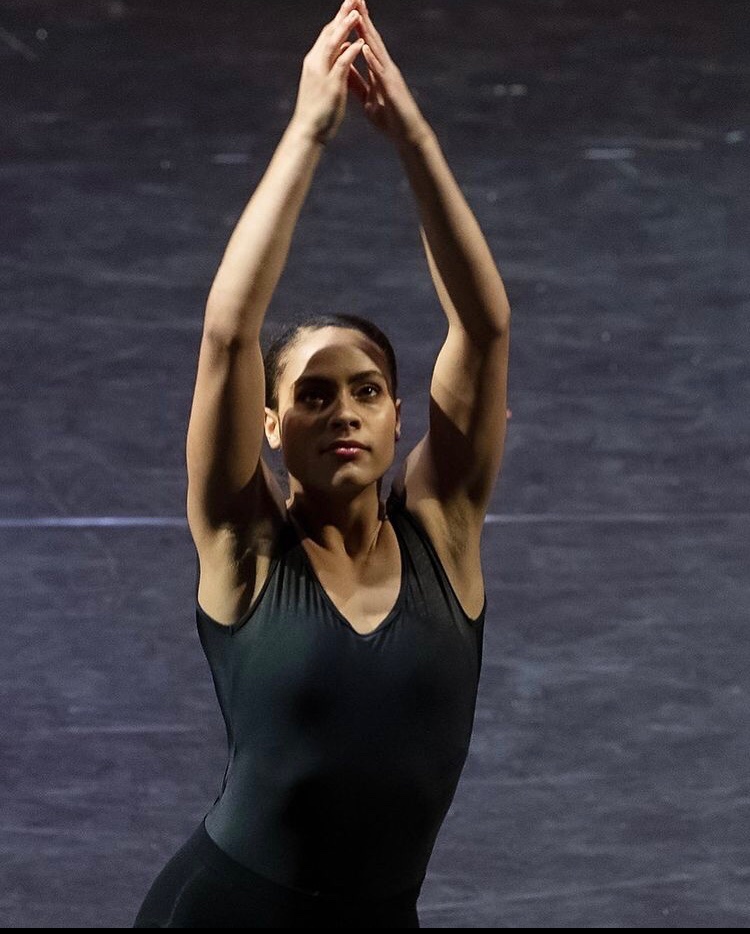Student’s research analyzes life’s impact on dancers

Growing up both Trinidadian and German, Anja Tempel’s biracial identity was something she struggled to understand as a kid and during her later adolescent years. But with the rise of Black Lives Matter protests in 2020, she was inspired to delve into analyzing her Black identity.
Fusing her love for dance and passion for diversity, Tempel, a rising sophomore majoring in dance, launched a directed research study last semester focused on dancers’ experiences with equity and diversity.
This past fall, Tempel took a course called “World Perspective on Dance Performance” with Achinta McDaniel, a part-time lecturer in Bollywood dance, who handles a large portion of the directed research for the USC Glorya Kaufman School of Dance. McDaniel approached Tempel about the research project, which included interviews and discussions with dancers about their experiences and identities.
“I just felt so passionate about it because I felt like I was finally understanding myself and why I felt the way I did for a majority of my childhood, or why I felt the way I did in certain situations,” Tempel said. “It was addicting almost; I was understanding so much of what I had missed for so long.”
In her research, Tempel investigated how “access, belonging, inclusion, diversity and equity” affects dancers’ mindsets, and she found that different circumstances in dancers’ lives affect them in the dance studio.
Tempel interviewed 10 participants from various backgrounds, races, ethnicities, religions, sexualities, gender identities and dance forms, and found that dancers’ identities play a role in their dancing and thoughts about themselves.
Tempel recalled one interviewee that struggled with perfectionism, which stemmed from feeling like they had to fit a certain gender role as a kid, and how this has translated into their current life, where the person is worried about choreographing because they have complete control and the fear of messing up that comes with that responsibility.
Tempel’s research also found that “belonging and identity [are] precursors for so much turmoil.”
“While [belonging] creates a lot of community and relationships, at the same time, when that belonging is threatened, it is the cause for a lot of strife as well,” Tempel said.
As part of her research, Tempel hosted a group discussion over Zoom, where she discussed her findings and spoke with other Kaufman students about their experiences with diversity and equity within dance. Though the participants were different from the interviewees, there was still a wide range of backgrounds, experiences and identities in the group.
The group discussion presented an opportunity for further exploration of issues surrounding diversity in dance, and it provided students with a safe, collaborative space to share their stories with peers.
“I loved being a part of the group discussion,” said Eileen Kim, a rising junior majoring in dance. “I think it’s really difficult to talk about things like identity and belonging and [access, belonging, inclusion, diversity and equity], which is what Anja started her research with. So I think it was really cool to have a space where we could be open and vulnerable.”
Colin Heino, a rising junior majoring in dance who was also part of the discussion, thought it was engaging and informative, as he learned from his peers the entire time. For Heino, the conversation was also an exploration of dance, personal identity and belonging, all common themes of Tempel’s research.
“I thought it was productive. Kind of questioning how we perceive, more specifically, dance, and more broadly, ourselves, our identity and where we belong,” he said.
Within the dance community, there is also conversation surrounding diversity within dance forms, with various types such as ballet, contemporary, hip hop, jazz and tap. Within these forms, there is a hierarchy that exists, with ballet at the top dominating the others, Kim and Heino said.
“There is seriously a hierarchy between ballet and a lot of other forms because ballet has become something associated with elitism, and it’s kind of this Eurocentric art form,” Heino said.
That hierarchy is part of the reason Tempel’s research is important to Heino, as he said he believes all dance forms should be appreciated and every dancer should be welcomed into each one.
“In each respective form, we’re making sure that we prioritize equity and inclusion and making sure that everyone has a place within each form,” Heino said. “One is not prioritized over the other.”
While Tempel’s directed research concluded at the end of the Spring 2021 semester, she intends to keep pursuing and dedicating herself to this work.
“I don’t plan to be done,” Tempel said. “These … things and conversations are lifelong. So, I really plan to continue this in the future.”

